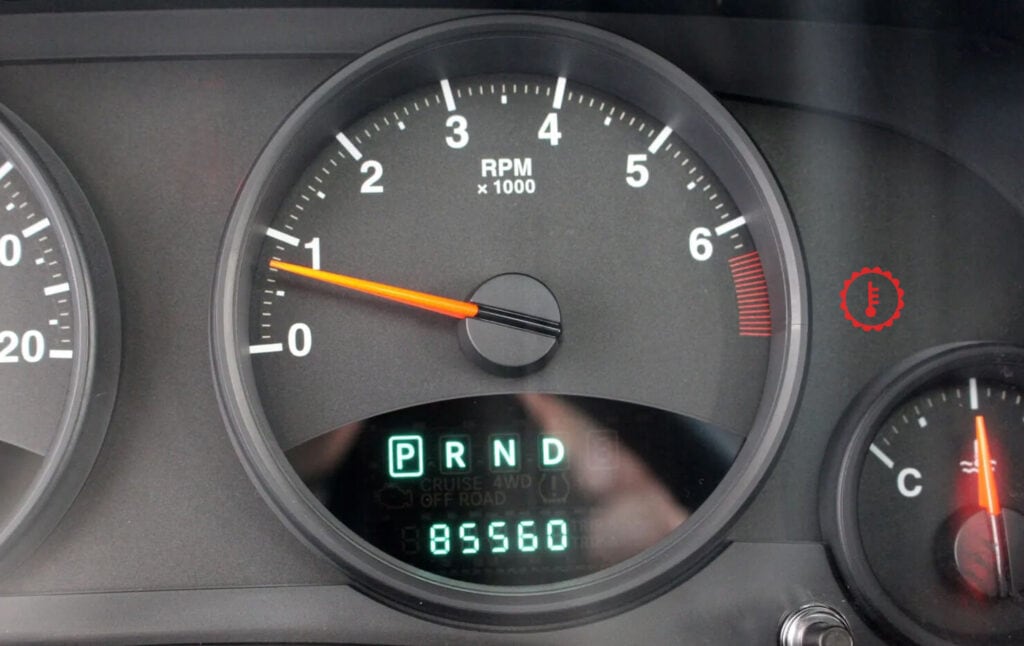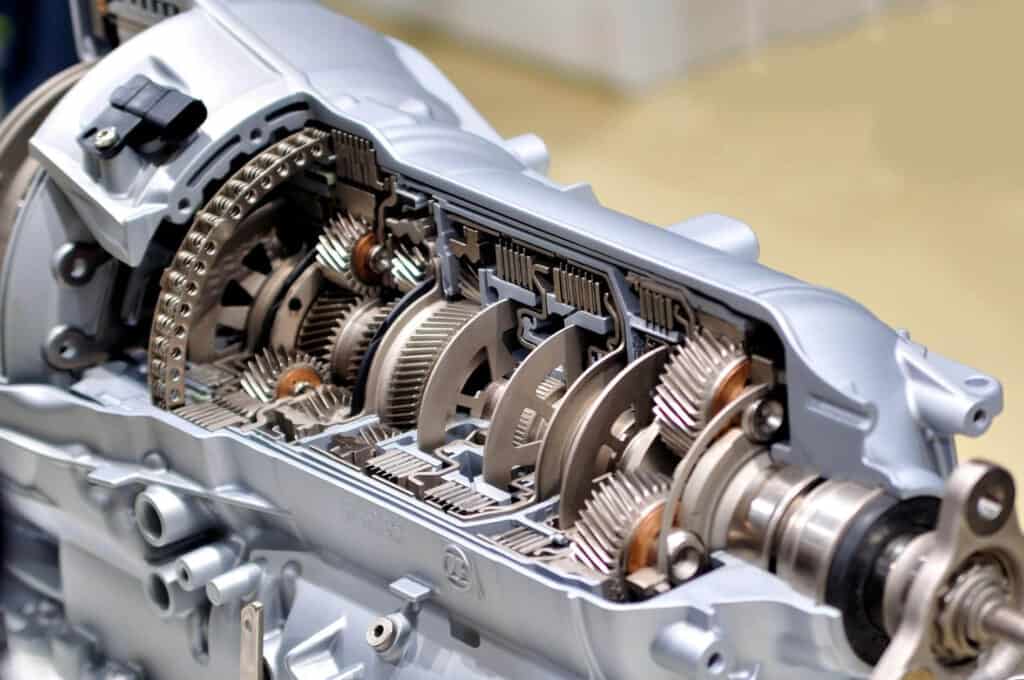Introduction: Shifting Gears and Raising Eyebrows: Why That Transmission Temperature Warning Light Matters
Strap in and fuel your curiosity as we delve into the mechanics of the transmission temperature warning light. We’ll tackle your burning questions and unlock the secrets that lie beneath your dashboard. By the end of this journey, you’ll leave automotive confusion behind like yesterday’s tailgaters.
Heat of the Moment: What Causes the Transmission Temp Light to Come On?
• Low Transmission Fluid: One of the most common culprits behind the transmission temperature light is low or poor-quality transmission fluid. Think of the fluid as the coolant that helps regulate your car’s internal temperature. When it’s low or of poor quality, the transmission system has a harder time dissipating heat, causing the warning light to come on.
• Towing Heavy Loads: If you’re hauling a heavy trailer or boat, your vehicle’s transmission system is working overtime. The extra effort puts additional strain on the transmission, generating more heat and possibly triggering the warning light. Always consult your car’s manual to check the towing capacity and other guidelines before pulling anything substantial behind you.
• Stop-and-Go Traffic: Imagine running a marathon but having to stop every few meters; that’s the equivalent of what your car goes through in stop-and-go traffic. The constant shifting puts stress on the transmission, causing it to heat up and sometimes triggering the warning light.

• External Factors: Environmental elements can also play a role. Driving on a particularly hot day can make it more challenging for your car’s cooling system to do its job effectively. If the ambient temperature is high and you’re in slow-moving traffic, the transmission temp light might decide to make an appearance.
• Transmission Problems: Mechanical issues, like a malfunctioning solenoid, worn-out clutch, or clogged filter, could be conspiring against your transmission, causing it to overheat. While these are less frequent causes, they could be behind the warning light.
• Compromised Cooling System: If your car’s radiator or cooling system is not working efficiently, it will inevitably affect the transmission temperature. Any compromise in the cooling mechanism is likely to trigger the transmission temperature warning light.
Smokin’ Hot: The Main Culprits Behind Transmission Overheating
When it comes to transmission overheating, understanding the main culprits can help you steer clear of automotive disaster. Stressful driving conditions, like hilly or mountainous terrains, put a great deal of strain on your vehicle’s transmission. The same is true when you’re towing heavy objects, such as a trailer or a boat. In these situations, your car’s transmission has to work extra hard to keep everything moving smoothly, leading to an increase in temperature. Then there’s stop-and-go traffic, the silent but ruthless killer of your car’s well-being. Similar to a smartphone that drains faster when you’re constantly unlocking and scrolling, your vehicle’s transmission feels the strain during bumper-to-bumper traffic, making overheating more likely.
Another key player in the overheating game is the quality and level of your transmission fluid. Much like how oil lubricates an engine, transmission fluid cools and lubricates the gears in your transmission. Old or low-quality fluid won’t perform this task as efficiently, leading to heat buildup. Also, mechanical issues like a worn clutch or a malfunctioning solenoid can contribute to overheating. Let’s not forget external factors such as extreme weather conditions—driving on a scorching summer day can indeed add fuel to the fire. Knowing these main causes will arm you with the information you need to prevent overheating and the domino effect of problems that could follow.
Chill Factor: How to Fix a High Transmission Temperature
So, what do you do when you’re caught in the heat of the moment with a high transmission temperature? First and foremost, safely pull over to the side of the road and give your car a chance to cool down. Think of it as sending your overheated laptop into sleep mode. Turning off the engine will halt additional heat generation and allow the existing heat to dissipate. Keep the engine off for at least 20 to 30 minutes for optimal cooling.
In persistent cases, consider replacing or upgrading your transmission fluid. A fluid change or upgrade can greatly improve your transmission’s ability to dissipate heat. Mechanical issues could also be at play; a faulty torque converter, for instance, can compromise the transmission’s ability to manage heat. If a simple cool-down and fluid change don’t do the trick, it may be time to contact a professional mechanic for a thorough diagnostic check. A professional can assess your transmission and other systems to identify and fix the root cause, saving you from future overheating issues.
Going with the Flow: How to Cool an Automatic Transmission
Automatic cars are often the go-to for those who prefer a more relaxed driving experience, but these systems aren’t immune to overheating. When it comes to cooling an automatic transmission, the first point of action usually revolves around the transmission fluid. Old or low-quality fluid can contribute to excessive heat. Therefore, regular fluid checks and possible upgrades can significantly improve transmission temperature and overall performance. Investing in high-quality, synthetic transmission fluid can offer better heat resistance and lubrication, enhancing the longevity of your transmission.
The second proactive step you can take is installing an auxiliary transmission cooler. This is especially beneficial for those who regularly engage in activities that stress the transmission, such as towing heavy loads. An external cooler works in tandem with your car’s built-in cooling system, providing an extra layer of protection against overheating. Apart from these, keeping an eye out for leaks and blockages in the cooling lines, and ensuring the proper functioning of the transmission temperature sensor, can all contribute to a cooler, more efficient automatic transmission.
Playing with Fire: Can You Drive with a Bad Transmission Temp Sensor?
The short answer is yes, you could drive your car with a faulty transmission temperature sensor, but it’s a risky game to play. Think of it like hiking through the forest without a map—technically possible, but you’re inviting potential trouble. A malfunctioning sensor won’t give you accurate readings, rendering you blind to whether the transmission is overheating. And remember, an overheated transmission could lead to serious, sometimes irreversible damage. So while you might be able to move from point A to point B, you’re taking a gamble each time you turn the ignition.
The other issue to consider is the cascade effect a bad sensor could have on your entire vehicle. A faulty sensor can trigger the transmission temperature warning light and engage your car’s limp mode, limiting performance to minimize damage. And if the sensor is giving false readings, you might find yourself constantly in limp mode, even when it’s not necessary. While the immediate risks might seem manageable, driving with a bad sensor can lead to other complications—each more expensive than the last to fix. So, it’s crucial to address a malfunctioning sensor promptly to keep your vehicle, and wallet, in good condition.

Meltdown Mechanics: What Happens When Your Transmission Overheats?
• Transmission Fluid Oxidation: Overheating can cause the fluid designed to keep your transmission running smoothly to oxidize. This can lead to less effective lubrication and, in turn, greater wear and tear on the system.
• Accelerated Damage: When a transmission overheats, it expedites the wear on crucial components like seals, clutches, and gears. This results in their diminished reliability and functionality.
• Slipping Gears: Overheating can cause the gears to slip, leading to unpredictable and hazardous driving conditions.
• Full System Breakdown: The worst-case scenario of overheating is a complete transmission failure. In layman’s terms, your car becomes a large paperweight unless you’re willing to pay for expensive repairs or replacements.
• Immediate Action Required: Ignoring a hot transmission can make your vehicle unsafe to drive and may lead to breakdowns, requiring towing and extended downtime.
The Dollars and Cents of It: Breakdown of Potential Repairs and Costs
Let’s talk dollars and cents
• Cost of Fluid Replacement: One of the simpler fixes, replacing or topping off transmission fluid can cost between $100 and $200.
• Sensor Repairs: If the problem is with the transmission temperature sensor itself, the repair costs may be moderate, ranging between $200 and $400.
• Mechanical Repairs: For issues like gear slipping or wear and tear on internal components, costs could escalate to the $800-$1,500 range, depending on the complexity of the repair.
• Labor Costs: Don’t forget that labor costs can add substantially to your bill. Rates generally range from $80 to $150 per hour, depending on where you live and the complexity of the work involved.
• Full Transmission Replacement: In a nightmare scenario where your entire transmission needs replacement, you’re looking at a bill that can range from $3,000 to $4,000.
• Towing and Additional Services: If your car breaks down and needs to be towed, this is an additional cost that can vary widely but generally starts at around $100.
By understanding the financial implications of each potential issue, you can better gauge what’s at stake when that pesky transmission temperature warning light flashes on your dashboard.
Conclusion: Cooling Down and Gearing Up: Your Complete Guide to Handling Transmission Temperature Issues
As we steer towards the end of our tour through transmission temperature troubles, it’s clear that knowledge is power—especially when it comes to keeping your ride smooth and your engine cool. If the thought of tackling transmission issues makes your temperature rise, remember that Uchaincs is here to help. Book an appointment today for peace of mind and a smoother, cooler drive.
